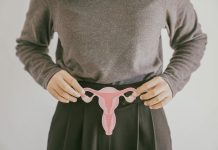Researchers at RUSH have revealed that urinary incontinence, a common issue affecting 30% to 50% of women, could have further health implications
The study, published in the January issue of Menopause, suggests that the frequency and volume of urinary leakage are associated with increased odds of disability in midlife women.
Medical Press reported that Dr. Sheila Dugan, Chair of the Department of Physical Medicine and Rehabilitation at RUSH, emphasised the tendency to overlook urinary incontinence symptoms until they become irritating or start limiting physical and social activities. “Because this study suggests that urinary incontinence is associated with disability, exploring treatment options in the early stages may help decrease this outcome in midlife women,” she explained.
What is urinary incontinence?
Urinary incontinence displays in various forms, with stress incontinence and urge incontinence being common types.
Stress incontinence occurs when pressure on the abdomen, as during sneezing or coughing, overwhelms the sphincter, leading to leakage. On the other hand, urge incontinence is characterised by a sudden, overwhelming need to urinate.
The research team analysed the amount and frequency of incontinence, categorising participants into stress incontinence, urge incontinence, or mixed urinary incontinence. Disability was measured using the World Health Organisation disability assessment scale.
Is urinary incontinence linked with a disability?
The findings revealed that mixed urinary incontinence, which combines stress and urge incontinence, was strongly correlated with disability. Daily incontinence and larger amounts of urine leakage were also associated with higher disability levels.
Dr. Dugan, a key figure in establishing the Program for Abdominal and Pelvic Health at RUSH, emphasised the importance of early intervention.
The program assesses individual cases to identify the root causes and offers tailored treatment options. Muscle evaluation helps distinguish whether tight or weak pelvic floor muscles contribute to incontinence.
“In a case of tight muscles, a woman may try to tighten the muscles further with more exercise, not knowing that it may make the incontinence worse,” Dr. Dugan explained.
Underlying causes
Pelvic floor muscles play a crucial role in supporting pelvic organs, and problems with organs can lead to muscle issues or vice versa. Underlying causes of incontinence can range from hip arthritis and difficult deliveries to cancer treatments like pelvic radiation.
The data was drawn from the SWAN (Study of Women Across the Nation) clinical trial, instigated in 1994 with over 1,800 participants. Dr. Dugan highlighted the need for further research to identify the causes of the association between urinary incontinence and disability, with a strong focus on preventive measures.
As the medical community looks deeper into understanding these connections, it becomes increasingly clear that addressing urinary incontinence in its early stages may not only improve the quality of life for midlife women but also potentially prevent the development of disability.














